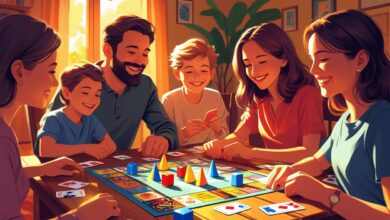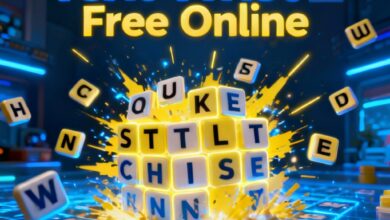Minecraft Franchise: A Complete Breakdown of History, Growth, Games & Global Impact

The Minecraft franchise is one of the most influential and profitable gaming franchises in modern history, recognized around the world for creativity, education, adventure, and limitless digital imagination. When gamers, parents, and students search online for information about the Minecraft franchise, they are usually looking for the history, official versions, expansions, corporate ownership, game variations, merchandise, updates, and future developments. This article explains how the Minecraft franchise evolved, what it contains today, what platforms it supports, how it keeps growing, and why it remains one of the best-selling digital franchises ever.
🌍 What Makes the Minecraft Franchise So Unique?
Unlike most video games, the Minecraft franchise is not based on a single storyline, character, or fixed campaign. Instead, it offers:
✔ A sandbox-style open world
✔ Unlimited building and survival creativity
✔ Cross-age and cross-platform appeal
✔ Community-driven expansion and mods
✔ Long-term educational value
While many games fade after a few years, the Minecraft franchise continues to expand with new updates, editions, spin-offs, digital products, and real-world merchandise that appeal to players of all ages.
📜 The Origin & History of the Minecraft Franchise
The Minecraft franchise began with a simple independent game prototype created by Markus Persson (Notch) in 2009 while part of Mojang, a small Swedish development studio. The game officially launched publicly in 2011 and quickly exploded in popularity.
Timeline highlights:
| Year | Milestone |
|---|---|
| 2009 | Minecraft alpha begins testing |
| 2011 | Official release & rise of Mojang |
| 2014 | Microsoft acquires Mojang for $2.5B |
| 2016-2020 | Multiple expansions & spin-off titles |
| 2022-2025 | Cross-media expansion, education & marketplace growth |
The acquisition by Microsoft marked a turning point, turning Minecraft from a public hit into a global multimedia empire.
🧩 Main Components of the Minecraft Franchise
The Minecraft franchise is no longer just a single game; it contains multiple official titles, modes, platforms, and content systems:
🎮 1. Base Game Editions
- Minecraft: Java Edition (PC; mod-heavy community favorite)
- Minecraft: Bedrock Edition (Cross-platform consoles + mobile)
- Minecraft Education Edition (Classrooms & STEM programs)
🔥 2. Spin-Off Games
The Minecraft franchise expanded beyond sandbox play into new genres:
- Minecraft Dungeons (Action RPG)
- Minecraft Legends (Strategy adventure storytelling)
🧸 3. Real-World Products
- LEGO sets
- Toys & collectibles
- Clothing & apparel
- Books, magazines & YouTube series
- Netflix interactive content
🏪 4. Digital Services
- Marketplace (skins, worlds, maps, and texture packs)
- Realms & Realms Plus subscriptions
- Server hosting & community-driven modding culture
📱 Available Platforms in the Minecraft Franchise
The Minecraft franchise is famous for being playable almost everywhere:
| Platform | Supported |
|---|---|
| Windows PC | ✔ |
| macOS | ✔ |
| Linux | ✔ |
| Xbox | ✔ |
| PlayStation | ✔ |
| Nintendo Switch | ✔ |
| iOS & Android | ✔ |
| Chromebook | ✔ |
| VR (Meta, PSVR, Windows MR) | ✔ |
No other sandbox IP in history has achieved this level of global compatibility.
💥 Why the Minecraft Franchise Dominates the Gaming World
1️⃣ Accessible for every age
Kids, teens, adults, seniors — all find value.
2️⃣ Endless replay value
No predefined ending means infinite gameplay.
3️⃣ Strong online community
Creators, streamers, teachers, and coders thrive inside the ecosystem.
4️⃣ Modding power
The Minecraft franchise thrives because players can customize and redesign it with shaders, texture packs, plugins, servers, and mod frameworks like Forge and Fabric.
🧠 Minecraft Franchise in Education
Teachers use Minecraft to teach:
- Math
- Coding (Java, Python, block-based)
- Geography & architecture
- Science & engineering
- Problem-solving & teamwork
It is now approved for school systems, learning platforms, esports communities, and after-school creativity programs.
📈 Cultural, Social & Economic Impact
The Minecraft franchise influenced:
- YouTube and streaming culture
- Meme and gaming language
- Digital creativity job roles
- Virtual concerts and events
- AI-based simulation design
It also inspired career paths in:
- Architecture
- Engineering
- Software design
- Artistic 3D modeling
- Content creation
🧭 The Future of the Minecraft Franchise
Analysts expect the Minecraft franchise to continue in several future directions:
🔮 Possible expansions:
- Full cinematic movies or TV series
- eSports & competitive gaming leagues
- VR-only immersive editions
- AI-powered in-game assistants
- Marketplace creator revenue upgrades
- Real world education labs & camps
❓ Frequently Asked Questions (Q&A)
Q1: Who owns the Minecraft franchise today?
Microsoft owns Mojang and all Minecraft intellectual property.
Q2: Is the Minecraft franchise still updating regularly?
Yes, frequent updates such as caves, cliffs, mobs, and biome expansions are ongoing.
Q3: Are Minecraft spinoff games included in the franchise?
Yes — games like Minecraft Dungeons, Story Mode, and Legends are part of the wider franchise universe.
Q4: Will there be a Minecraft movie?
A major film adaptation has been reported and discussed in industry circles, with development updates appearing over time.
Q5: Why is the Minecraft franchise still so popular?
Unlimited creativity, strong community engagement, constant updates, and cross-platform support keep it timeless.





